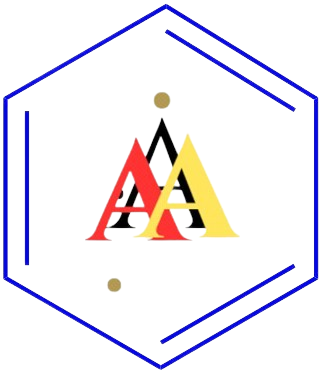Publication Ethics
Responsibilities of Authors
- Reporting Standards: Authors of original research papers must provide a precise explanation of the conducted work and an impartial discussion of its importance. The article must appropriately portray the underlying data. A manuscript must provide adequate detail and citations to enable others to reproduce the research. Fraudulent or wilfully inaccurate claims represent unethical conduct and are intolerable.
- Data Access and Retention: Authors must submit the raw data associated with a manuscript for editorial evaluation and should be ready to ensure public access to this data (in accordance with the ALPSP-STM Statement on Data and Databases), if feasible. Furthermore, authors must be prepared to retain this data for a reasonable duration following publication.
- Originality and Plagiarism: Authors must guarantee that their works are wholly original, and if they have utilised the work or words of others, proper citation or quotation must be provided.
- Multiple, Redundant, or Concurrent Publication: An author should generally refrain from publishing manuscripts that describe the same study in multiple journals or principal publications. Submitting an identical paper to many journals simultaneously is deemed unethical publication conduct and is impermissible.
- Attribution of Sources: Proper attribution to the contributions of others must consistently be provided. Authors must reference publications that have significantly influenced the characterisation of the reported study.
- Authorship of the Paper: Authorship must be restricted to individuals who have contributed substantially to the conception, design, implementation, or interpretation of the reported study. All individuals who have made substantial contributions should be acknowledged as co-authors. Individuals contributing to certain substantive elements of the research endeavour should be acknowledged or identified as contributors. The corresponding author must verify that all suitable co-authors are included in the manuscript, excluding any unsuitable co-authors, and that all co-authors have reviewed and approved the final version of the paper and consented to its submission for publication.
- Disclosure & Conflicts of Interest: All authors must disclose in their article any financial or substantial conflict of interest that could be perceived to affect the results or interpretation of their work. All sources of financial backing for the project must be revealed.
- Essential errors in published works: When an author identifies a substantial error or inaccuracy in their own published work, it is their responsibility to swiftly inform the journal editor or publisher and collaborate with the editor to retract or amend the piece.
- Hazards and Human or Animal Subjects: If the research entails chemicals, processes, or equipment with inherent special hazards, the author must explicitly describe these in the publication.
Responsibilities of Editors
- Fair Play: An editor may assess manuscripts for their intellectual merit at any moment, irrespective of the writers' race, gender, sexual orientation, religious beliefs, ethnic background, citizenship, or political ideology.
- Confidentiality: The editor and editorial staff must not reveal any information regarding a submitted article to anybody except the corresponding author, reviewers, potential reviewers, other editorial advisors, and the publisher, as applicable.
- Disclosure and Conflicts of Interest: Unpublished materials revealed in a submitted paper shall not be utilised in an editor's research without the explicit written approval of the author.
- Publication Decisions: The journal's editorial board is tasked with determining which submitted articles will be published. The validation of the work in question and its significance to scholars and readers must consistently guide such selections. The editors may adhere to the policies of the journal's editorial board and be bound by applicable legal stipulations against libel, copyright infringement, and plagiarism. The editors may consult with other editors or reviewers in reaching this decision.
- Manuscript Evaluation: The editor must first assess each manuscript for originality. The editor must administer and implement peer review judiciously and equitably. Editors must elucidate their peer review procedures in the author guidelines and specify which journal sections undergo peer review. The editor must identify suitable peer reviewers for manuscripts under consideration for publication, ensuring they possess adequate knowledge and are free from conflicts of interest.
Responsibilities of Reviewers
- Peer review aids the editor in making editing judgments and, through contact with the author, may also facilitate the enhancement of the manuscript.
- Timeliness: Any appointed referee who believes they are unqualified to evaluate the research presented in a paper or recognizes that a timely evaluation is unfeasible should inform the editor and withdraw from the review process.
- Criteria for Objectivity: Evaluations must be performed impartially. The personal critique of the author is unwarranted. Referees must articulate their opinions distinctly, accompanied by substantiating arguments.
- Confidentiality: All manuscripts submitted for evaluation shall be regarded as confidential documents. They must not be disclosed to or discussed with others unless allowed by the editor.
- Disclosure and Conflict of Interest: Confidential information or concepts acquired during peer review shall remain undisclosed and not be utilised for personal gain. Reviewers must refrain from evaluating submissions if they possess conflicts of interest arising from competing, collaborative, or other affiliations with any authors, companies, or institutions associated with the articles.
- Recognition of Sources: Reviewers must discover pertinent published works that the authors have failed to cite. Any assertion that an observation, derivation, or argument has been previously documented must include the appropriate citation. A reviewer must inform the editor of any significant similarities or overlaps between the manuscript in question and any other published work they know.




